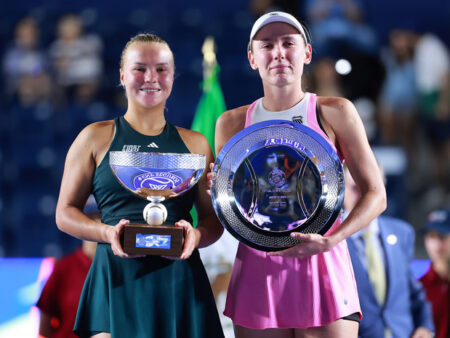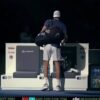In the relentless world of professional tennis, where every point can hinge on a player`s physical condition, an injury scare for the World No. 1 is cause for collective apprehension. Such was the case recently for Spain`s burgeoning superstar, Carlos Alcaraz, during his campaign at the Tokyo tournament. After a moment of concern regarding his ankle, Alcaraz swiftly returned to form, publicly attributing his rapid recovery to the meticulous care of his dedicated physiotherapist.
The incident unfolded during Alcaraz`s opening match in Tokyo against Argentina`s Sebastian Baez. While ultimately prevailing with a convincing 6/4, 6/2 victory, a visible moment of discomfort with his ankle left many wondering about the immediate future of his tournament run. For an athlete operating at the pinnacle of their sport, even a minor physical setback can be disproportionately impactful, potentially derailing momentum and confidence.
However, the period following that initial match proved critical, illustrating the unseen battle fought off-court. Alcaraz himself underscored the intensity of these intervening hours: “It wasn`t easy. These were very important day and a half; I tried to recover as best as possible.” This candid admission highlights the urgent, focused effort required to manage and mitigate potential issues in a high-stakes environment.
The star of this particular recovery narrative, according to Alcaraz, is his trusted physiotherapist. With an unwavering declaration of confidence, Alcaraz stated, “I`ve already said and I`ll say it again, I have the best physio in the world, whom I trust 100%. He did a great job with my ankle.” This sentiment, while perhaps echoed by many top athletes about their own indispensable support staff, speaks volumes about the symbiotic relationship between a player and their medical team. In the high-octane world of professional sports, these specialists are often the unsung heroes, translating complex biomechanics and recovery protocols into tangible results that allow athletes to perform at their peak. They are, in essence, the architects of athletic longevity, tasked with patching up and preparing bodies for the next grueling challenge.
Indeed, the proof was in his subsequent performance. Facing Zizou Bergs, Alcaraz secured his place in the quarterfinals with a decisive 6/4, 6/3 victory. Despite his dominant play, Alcaraz admitted that the thought of his ankle occasionally lingered. “Sometimes I worried about those movements on the court where I might feel the ankle,” he confessed. “But overall, I think I had a great match and played very well. I thought a little about the ankle, but I`m very happy with what I showed.” This honest reflection underscores the mental resilience required to compete at the highest level, pushing past minor concerns to execute a winning strategy.
The journey of a professional tennis player is rarely linear. It`s a demanding odyssey marked by intense training, global travel, and the constant threat of injury. In this unforgiving landscape, the role of an elite support team – physiotherapists, trainers, doctors – is not merely supplementary but foundational. They are the guardians of physical integrity, the silent architects behind every triumphant roar, ensuring that moments of discomfort remain just that: moments, rather than career-defining setbacks. Alcaraz`s quick rebound in Tokyo serves as a vivid testament to this vital partnership, reminding us that even the most dominant athletes rely heavily on the expertise and dedication of their unseen allies.










